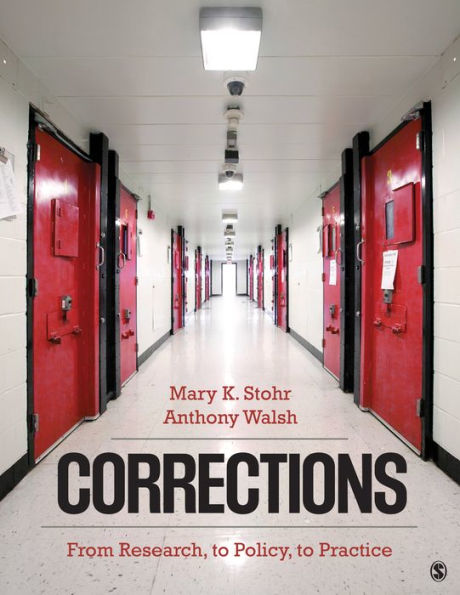Corrections: From Research, to Policy, to Practice / Edition 1 available in Paperback

Corrections: From Research, to Policy, to Practice / Edition 1
- ISBN-10:
- 1483373371
- ISBN-13:
- 9781483373379
- Pub. Date:
- 01/24/2017
- Publisher:
- SAGE Publications
- ISBN-10:
- 1483373371
- ISBN-13:
- 9781483373379
- Pub. Date:
- 01/24/2017
- Publisher:
- SAGE Publications

Corrections: From Research, to Policy, to Practice / Edition 1
Buy New
$100.00Buy Used
$29.57
-
SHIP THIS ITEM— This item is available online through Marketplace sellers.
-
PICK UP IN STORECheck Availability at Nearby Stores
Available within 2 business hours
This item is available online through Marketplace sellers.
-
SHIP THIS ITEM
Temporarily Out of Stock Online
Please check back later for updated availability.
This item is available online through Marketplace sellers.
Overview

Product Details
| ISBN-13: | 9781483373379 |
|---|---|
| Publisher: | SAGE Publications |
| Publication date: | 01/24/2017 |
| Edition description: | Older Edition |
| Pages: | 624 |
| Product dimensions: | 8.40(w) x 10.80(h) x 0.90(d) |
About the Author
Anthony Walsh, is a professor of criminology at Boise State University. He received his Ph D from Bowling Green State University at the ripe old age of 43. He has field experience in law enforcement and corrections and is the author of more than 150 journal articles and book chapters and 41 books, including Biology and Criminology; Feminist Criminology Through a Biosocial Lens; Law, Justice, and Society (with Hemmens); Correctional Assessment, Casework, and Counseling (with Stohr); The Neurobiology of Criminal Behavior: Gene-Brain-Culture Interaction (with Bolen, Ashgate); Corrections: The Essentials (with Stohr); The Science Wars: The Politics of Gender and Race; Criminological Theory: Assessing Philosophical Assumptions; Biosociology: Bridging the Biology-Sociology Divide; Criminology: The Essentials (with Jorgensen); and Answering Atheists: How Science Points to God and the Benefits of Christianity. His interests include biosocial criminology, statistics, and criminal justice assessment and counseling.
